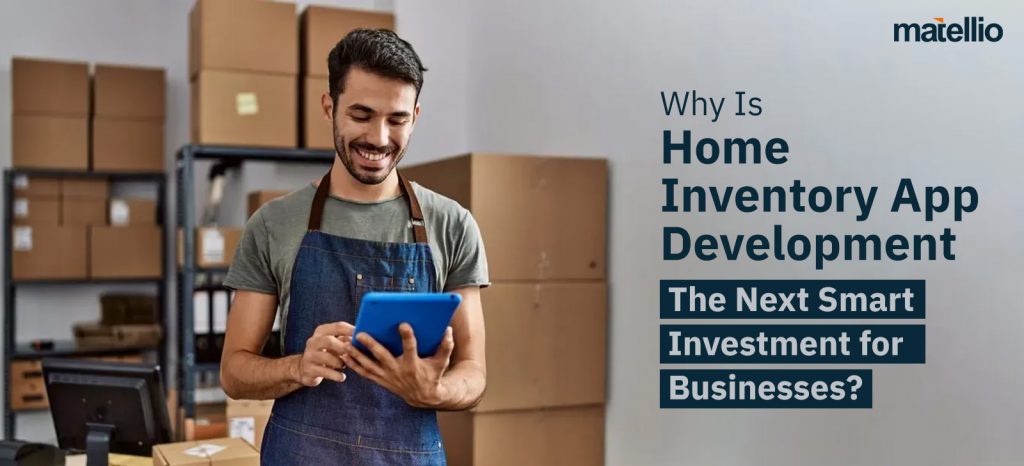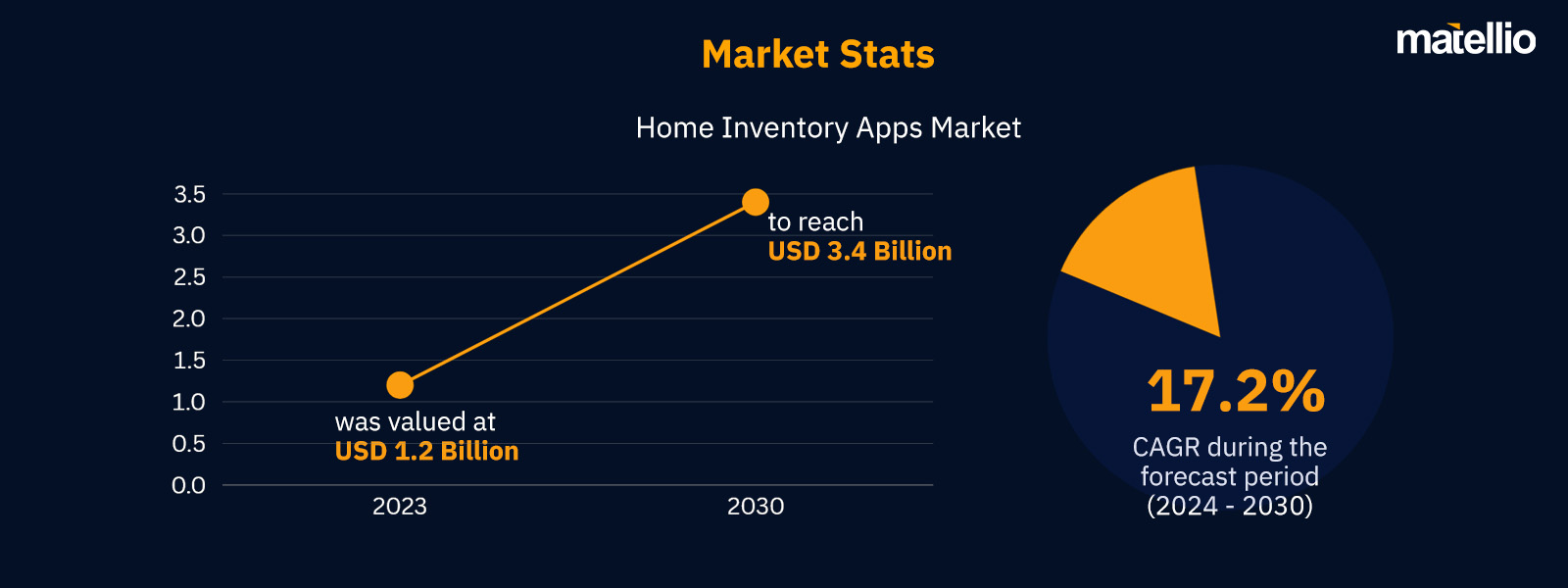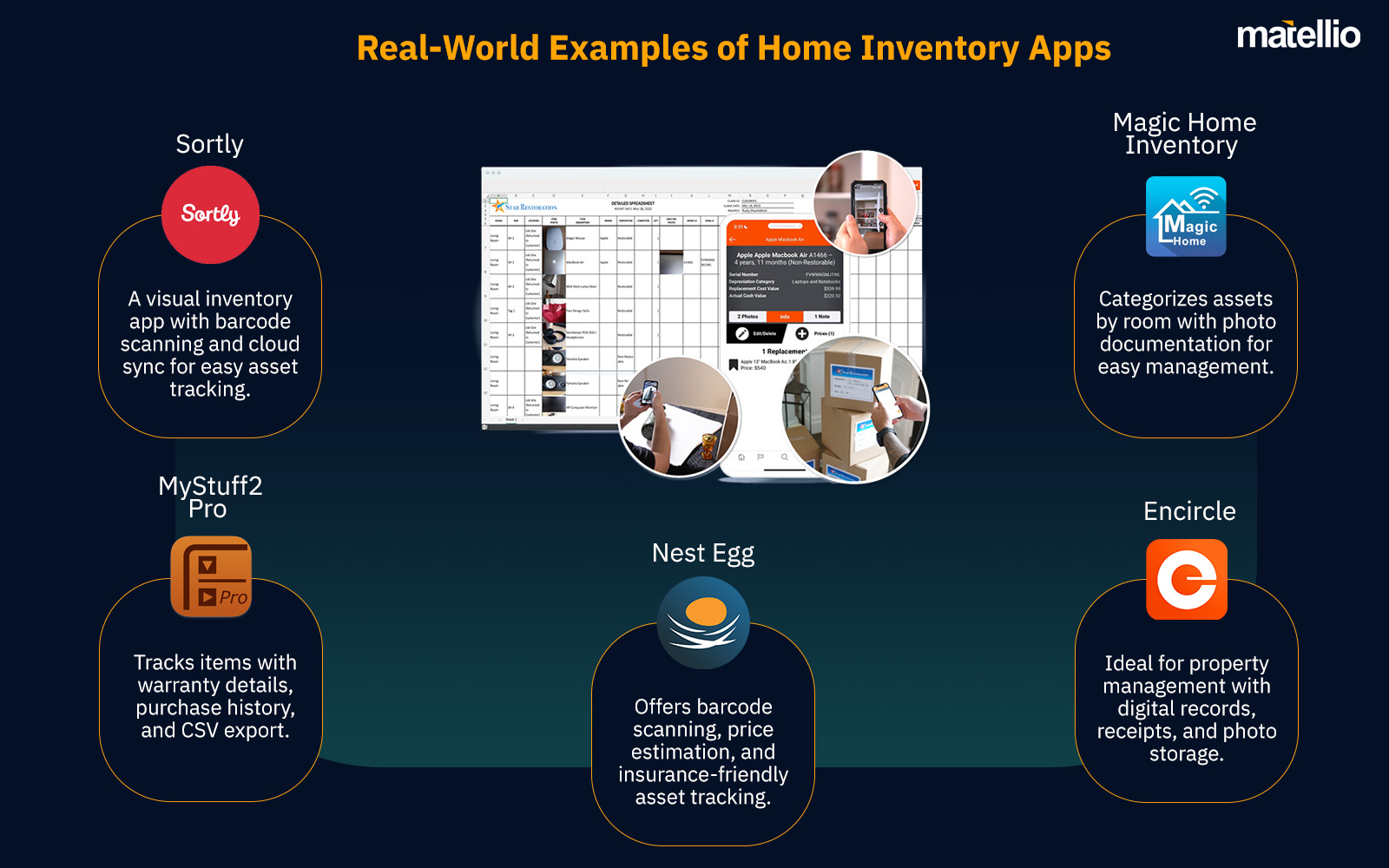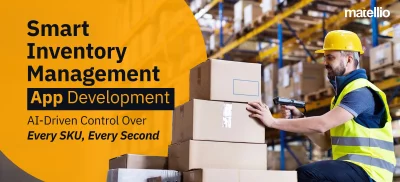
The growing reliance on digital solutions has made home inventory management more efficient and accessible. Whether for homeowners or businesses, maintaining an organized inventory of valuable assets is crucial for security, insurance claims, and streamlined asset tracking. Investing in home inventory app development allows businesses to provide users with a seamless way to document, categorize, and manage their belongings effortlessly.
With technology advancing rapidly, traditional methods of inventory tracking—such as spreadsheets and manual logs—are becoming obsolete. Mobile and cloud-based home inventory apps are revolutionizing asset management by enabling real-time updates, secure storage, and intelligent tracking. Choosing the right solution ensures increased efficiency, improved security, and an optimized approach to asset organization.
What Is a Home Inventory App?
A home inventory app is a digital solution that enables users to catalog, track, and manage their home assets, such as furniture, electronics, jewelry, and essential appliances. These apps provide homeowners and businesses with a structured way to document belongings for insurance purposes, resale, or estate planning.
Key Functions of a Home Inventory App
- Asset Tracking: Users can list household items with descriptions, values, and images.
- Real-Time Access: Cloud-based storage ensures that inventories remain updated across multiple devices.
- Loss Prevention: Detailed records simplify insurance claims in case of theft, loss, or damage.
- Automated Organization: AI-driven categorization and search functions enhance accessibility.
 Source: Verified Market Reports
Source: Verified Market Reports
Key Business Benefits of Home Inventory App Development
Custom-built home inventory apps provide significant advantages to businesses by streamlining inventory tracking, enhancing security, and simplifying insurance processes. By leveraging digital transformation services, businesses can integrate advanced technologies to optimize asset management and improve overall operational efficiency.
 Enhanced Asset Management
Enhanced Asset Management
A structured system for storing inventory details minimizes the risk of mismanagement and loss. Businesses can ensure that all assets are properly documented, categorized, and accessible in a centralized system, reducing manual errors and improving overall efficiency. House inventory app solutions offer an advanced approach to asset management with structured categorization and easy tracking.
 Improved Customer Experience
Improved Customer Experience
Offering a digital home inventory solution increases engagement and satisfaction among users. By providing intuitive features such as barcode scanning, voice input, and AI-powered categorization, businesses can deliver a seamless and user-friendly experience that enhances convenience for homeowners. App to keep track of food inventory at home ensures better organization and efficiency in household management.
 Seamless Insurance Documentation
Seamless Insurance Documentation
Automated documentation simplifies claims processing, reducing disputes and improving efficiency. With pre-filled insurance reports and real-time valuation updates, users can quickly generate reports for insurance claims, making the process faster and more transparent for both businesses and consumers. A home storage inventory app simplifies the process of cataloging assets for insurance and financial documentation.
 Scalability & Customization
Scalability & Customization
Businesses can tailor features according to user needs, expanding their service offerings. Whether for individual homeowners, landlords, or enterprises managing multiple properties, customizable solutions allow businesses to scale their services based on customer demands. Inventory app for home allows businesses to offer specialized solutions that cater to different market segments.
 Integration with Smart Home Ecosystems
Integration with Smart Home Ecosystems
IoT-enabled tracking ensures real-time asset monitoring and automation capabilities. Businesses can integrate home inventory apps with smart home devices, allowing automated alerts for asset maintenance, condition monitoring, and security enhancements. App to inventory house connects seamlessly with home automation tools to enhance real-time monitoring.
 Data Security & Backup
Data Security & Backup
Cloud storage guarantees secure, encrypted data storage, preventing accidental loss. With multi-layer encryption, role-based access controls, and automated backups, businesses can ensure data protection while maintaining compliance with security regulations. App for home food inventory ensures that all stored data remains secure, encrypted, and accessible anytime.
 Higher Market Competitiveness
Higher Market Competitiveness
A robust home inventory app positions businesses as industry leaders in digital asset management. By offering a cutting-edge solution with advanced analytics, reporting capabilities, and AI-driven insights, businesses can differentiate themselves in a competitive market and attract a broader customer base. Food inventory apps for home enhance user convenience while making businesses more competitive in the digital solutions market.
Read More: Optimize stock control and boost efficiency with Inventory Management App Development for real-time tracking and seamless operations.
Types of Home Inventory Apps
Businesses can develop various types of home inventory apps tailored to specific user needs, ensuring effective asset tracking, security, and accessibility. Below are the key types of home inventory apps and their unique functionalities.
Standalone Home Inventory Apps
Standalone home inventory apps are designed primarily for individual homeowners looking to organize and track their household assets. These apps allow users to manually enter inventory details, categorize items, and update records as needed. House inventory app solutions provide a structured approach to cataloging home assets efficiently, ensuring users can easily retrieve important data whenever needed.
Cloud-Based Home Inventory Apps
Cloud-based home inventory apps provide users with real-time accessibility to their inventory data from multiple devices. These apps enable seamless synchronization across smartphones, tablets, and desktops, ensuring that inventory records are always up to date. With the integration of Cloud integration services, businesses can ensure secure data backups, preventing accidental loss due to device malfunctions or data corruption.
AI-Powered Inventory Management Apps
AI-powered home inventory apps leverage machine learning algorithms to automate asset tracking and organization. These apps can intelligently categorize household items, suggest optimal storage solutions, and even predict asset depreciation over time. Users looking for a smart solution can benefit from an app to keep track of food inventory at home, utilizing AI-driven tracking to enhance food management and reduce waste.
Read More: Overcome inventory management challenges with smart solutions for efficiency and accuracy.
Insurance-Integrated Home Inventory Apps
For homeowners who want to streamline the insurance claim process, insurance-integrated home inventory apps provide an essential solution. These apps allow users to generate digital records of their assets, including receipts, purchase details, and warranties. Home storage inventory app solutions help homeowners maintain organized records, making insurance claims faster, more efficient, and free from unnecessary disputes.
IoT-Enabled Home Inventory Apps
IoT-enabled home inventory apps connect with smart home devices to offer real-time tracking and monitoring of valuable assets. These apps integrate with IoT-based sensors, RFID tags, and smart locks to enhance asset security. With a home inventory management app, users receive automated alerts for maintenance needs, theft detection, or item movement, ensuring their valuables remain secure at all times.
Read More: Elevate your furniture business with Software for Furniture Retailers for streamlined operations, enhanced customer experiences, and increased sales.
Key Features to Include in a Home Inventory App
A home inventory app should offer essential features that simplify asset tracking, security, and organization. With technology consulting services, businesses can integrate advanced capabilities like AI automation and IoT tracking, ensuring seamless functionality and an optimized user experience.
| Core Features | Next-Gen Features |
| Item Categorization | AI-Powered Search |
| Barcode & QR Scanning | Smart Notifications |
| Cloud Backup | IoT-Enabled Tracking |
| Photo & Video Uploads | Predictive Analytics |
| Secure Data Encryption | Automated Asset Valuation |
| Report Generation | Voice Command Functionality |
Wish To Include These Next-Gen Driven Features Within Your Custom-built Home Inventory App?
Steps for Home Inventory App Development Process
Developing a home inventory app requires a structured and strategic approach to ensure its efficiency, usability, and long-term success. Below is a detailed step-by-step breakdown of the process, along with expert guidance on each phase.
 Requirement Analysis & Planning
Requirement Analysis & Planning
Before development begins, businesses must define their objectives, target audience, and key app features. Requirement analysis ensures that the app aligns with business needs and user expectations. This phase also involves market research, feasibility studies, and competition analysis. On Demand App Development Company solutions help businesses identify core functionalities that will maximize user engagement.
We conduct thorough market research and feasibility studies to develop a well-structured roadmap. Our team ensures that the app’s functionalities align with industry standards and user demands, setting the foundation for a successful product.
 UI/UX Design & Prototyping
UI/UX Design & Prototyping
A well-designed home inventory app must be visually appealing and intuitive. The user interface (UI) should ensure smooth navigation, while the user experience (UX) should make asset tracking and management effortless. Wireframes and prototypes help visualize the final product before development begins. MVP development company methodologies help refine the design process, ensuring a user-centric approach.
We design interactive prototypes and user-friendly interfaces that enhance usability and brand consistency. Our team ensures that the design layout provides seamless navigation and an engaging experience for all users.
 App Development & Integration
App Development & Integration
Once the design is finalized, the app moves into the development phase. This involves backend and frontend development, database management, and API integration. Choosing the right technology stack is crucial to ensure scalability, security, and optimal performance. Home inventory app development focuses on incorporating essential and advanced features to enhance functionality.
We develop scalable and high-performing custom solutions tailored to your business needs. Our team integrates third-party APIs, cloud services, and other essential functionalities to enhance the app’s capabilities.
 Testing & Quality Assurance
Testing & Quality Assurance
Before launching the app, rigorous testing is conducted to identify and fix bugs, security vulnerabilities, and performance issues. Functional, usability and security testing ensure a seamless user experience. House inventory app solutions undergo multiple test cycles to guarantee error-free deployment.
Our QA specialists conduct comprehensive testing using advanced methodologies. We perform security assessments, functionality tests, and stress tests to guarantee a flawless and secure app experience.
 Deployment & Post-Launch Support
Deployment & Post-Launch Support
Once the app is tested and optimized, it is deployed to app stores and made available to users. However, app development does not end at deployment. Continuous maintenance, updates, and customer support ensure long-term success. App to keep track of food inventory at home and other smart inventory solutions benefit from ongoing enhancements to keep up with market trends.
We provide ongoing post-launch support, including app updates, bug fixes, performance enhancements, and feature expansions. Our team ensures that the app remains relevant, secure, and aligned with evolving market trends.
Want To Learn About the Development Cost of a Home Inventory App?
Challenges Solved Using Custom Home Inventory Apps
Managing home inventory manually presents several inefficiencies, security risks, and operational challenges. Custom Home Inventory app development helps businesses and homeowners overcome these issues by leveraging automation, AI-driven insights, and cloud technology. Below are some of the core challenges that businesses face and how custom-built solutions address them effectively.
Manual Asset Tracking
Traditional inventory tracking methods, such as paper logs or spreadsheets, are time-consuming, prone to human errors, and difficult to maintain. Searching for lost items, updating records, and managing bulk assets manually often leads to inefficiencies.
Solution: A house inventory app automates asset documentation by allowing users to scan barcodes, upload images, and add digital records effortlessly. AI-powered categorization organizes assets into predefined groups, ensuring a structured and easy-to-access database.
Data Loss Risks
Physical records or device-based data storage pose a risk of permanent data loss due to damage, theft, or hardware failures. Losing essential inventory records can be frustrating, particularly when users need proof for insurance claims or asset tracking.
Solution: An app to keep track of food inventory at home integrated with cloud storage solutions offers secure, encrypted backup, ensuring that users never lose critical data. Even in case of a device failure, data remains accessible across multiple platforms with automatic synchronization.
Time-Consuming Inventory Updates
Keeping an updated inventory record can be a tedious process, particularly for large households or businesses managing multiple properties. Manually adding, editing, or deleting inventory entries takes up unnecessary time and effort.
Solution: Home inventory apps enable real-time synchronization across multiple devices. Users can update inventory details instantly, with all modifications reflecting across connected devices, eliminating duplicate records and ensuring data consistency.
Lack of Smart Integration
Most traditional home inventory tracking methods lack smart integration, meaning users must rely on manual updates and static reports. This results in inefficient monitoring, outdated records, and an inability to track assets effectively.
Solution: Advanced home storage inventory app integrates machine learning solutions, allowing automated categorization, predictive asset tracking, and enhanced organization. AI-driven automation ensures that asset tracking becomes more intuitive and adaptive over time.
Complex Insurance Documentation
When filing an insurance claim, homeowners often struggle to provide accurate details regarding lost or damaged assets. This complexity can lead to delays in claim approvals or disputes with insurance providers.
Solution: The inventory app for home streamlines insurance documentation by storing receipts, warranty details, and purchase history in one place. These apps generate automated insurance reports with just a few clicks, ensuring smoother claim processing and reducing paperwork.
Inefficient Organization
Manually sorting and organizing assets across different categories can be overwhelming. Homeowners often struggle to find specific items in large inventories due to poor record-keeping.
Solution: AI-driven home inventory management app categorizes assets based on purchase history, type, and usage frequency. Users can quickly filter and search for items, ensuring better organization and enhanced efficiency in asset management.
Limited Multi-User Access
Many households require shared inventory access among family members or property managers. Traditional inventory solutions lack collaborative functionalities, making it difficult to maintain a unified asset record.
Solution: App to inventory house provides multi-user collaboration, allowing authorized individuals to manage and update inventory collectively. Role-based permissions ensure that access remains secure while enabling efficient asset tracking across multiple users.
Beat These Challenges with The Power of a Custom-Built Home Inventory App
Development Models & Strategies for Home Inventory Apps
Developing a home inventory app for iPhone or Android requires businesses to choose the right development model that aligns with their operational needs, budget, and market expectations. The right approach ensures that the app delivers seamless functionality, great user experience, and long-term scalability. Below are the key development models and strategies businesses can consider.
Agile Development Approach
The Agile development methodology is one of the most effective models for home inventory management app development. It focuses on continuous iterations, flexibility, and user-driven enhancements, ensuring that the app evolves with market demands. This approach allows businesses to incorporate real-time feedback, fix issues early in development, and introduce new features through incremental updates.
Key Benefits:
- Accelerated time-to-market with faster updates.
- Ability to pivot based on user feedback and emerging trends.
- Continuous testing and improvement for higher-quality app performance.
Our team follows the Agile framework, ensuring that businesses receive a home storage inventory app that is adaptable and scalable. By breaking the development process into iterative sprints, we help businesses optimize resources while delivering a feature-rich app that meets evolving user needs.
AI-Driven Development for Smart Inventory Tracking
With advancements in IoT, AI-powered features have become a crucial part of modern grocery inventory apps for home solutions. AI integration enables predictive analytics, automated asset categorization, and smart tracking capabilities, making inventory management more intuitive and data driven.
Key Benefits:
- AI-powered recommendations for stock replenishment.
- Automated organization and real-time tracking of assets.
- Enhanced security with AI-driven anomaly detection.
Our team incorporates AI and IoT integration services to develop intelligent inventory apps. By leveraging AI-driven analytics, we help businesses create data-driven inventory solutions that adapt to user behavior and optimize inventory management.
Cross-Platform Development
To reach a wider audience, businesses must decide whether to develop a home inventory app for Android and iOS separately or adopt a cross-platform approach. Cross-platform development allows a single codebase to work across both operating systems, reducing costs and development time.
Key Benefits:
- Maximized user accessibility across different devices.
- Faster deployment and cost-effective development.
- Uniform design and functionality across multiple platforms.
We use advanced cross-platform frameworks such as Flutter and React Native to build high-performing apps to inventory house solutions. Our experts ensure that businesses can launch on both iOS and Android seamlessly without compromising performance or user experience.
Custom vs. SaaS-Based Models
Businesses must decide whether to build a custom home inventory app tailored to specific needs or opt for a SaaS-based (Software-as-a-Service) model, which provides pre-built solutions with subscription-based pricing.
- Custom Home Inventory Apps: Tailored for businesses that require unique features, integrations, and branding. These apps provide full control over functionality and scalability but involve higher upfront investment.
- SaaS-Based Home Inventory Apps: Ideal for businesses seeking a ready-to-use solution with lower initial costs. SaaS apps provide easy deployment, cloud-based storage, and automatic updates but may have limitations in customization.
Key Benefits:
- Custom apps provide complete control, branding, and flexibility.
- SaaS-based solutions offer affordability, faster implementation, and automatic upgrades.
We analyze your business needs and recommend whether a food inventory app for home should be built as a custom solution or a SaaS model. Our team ensures that businesses invest in the most effective and scalable approach for long-term success by leveraging SaaS development services to build powerful, adaptable solutions.
Cloud-Based Deployment for Scalable Storage
Cloud integration is a critical strategy for modern home inventory apps as it ensures secure, scalable, and real-time access to inventory data across multiple devices. Whether for individual users or businesses managing multiple properties, cloud-based deployment offers seamless synchronization and data protection.
Key Benefits:
- Secure, encrypted storage with automatic backups.
- Multi-device synchronization for real-time updates.
- Scalable architecture to handle growing inventory data.
Our team specializes in next-gen integration services, ensuring that businesses get a home inventory app for iPhone or Android with secure cloud storage. We implement scalable cloud solutions that allow users to access their inventory anytime, anywhere, without data loss.
Future Trends in Home Inventory App Development
The rapid evolution of technology is redefining home inventory app development, making asset tracking more efficient, automated, and secure. Businesses looking to build competitive home inventory solutions must embrace emerging trends that enhance usability, security, and smart integrations. Below are the most significant trends shaping the future of home inventory apps.
AI-Driven Inventory Categorization
Artificial Intelligence (AI) is transforming inventory management by automating asset classification and organization. AI-powered systems analyze item images, detect categories, and assign relevant tags, reducing manual effort. With AI integration services, businesses can enhance home inventory apps with intelligent sorting, predictive recommendations, and automated inventory updates for improved efficiency.
IoT-Connected Smart Home Asset Tracking
With the increasing adoption of IoT, home inventory apps are integrating with smart home devices for real-time asset tracking. IoT-powered inventory systems use RFID tags, motion sensors, and smart labels to monitor items and detect any unauthorized movements. A well-designed app to keep track of food inventory at home can integrate with smart refrigerators and pantry systems to send automated alerts when food items are nearing expiration or running low.
Predictive Analytics for Risk Assessment
Predictive analytics is becoming a critical feature in home inventory apps, enabling users to forecast maintenance schedules, assess risks, and predict asset depreciation. By analyzing usage patterns, the app can suggest when appliances or valuable items may require servicing or replacements, helping users optimize long-term asset management and reduce unexpected expenses.
Voice-Activated Inventory Updates
Hands-free control is a growing trend in home storage inventory app solutions, allowing users to update inventory using voice commands. Integration with smart assistants like Alexa, Google Assistant, and Siri enables users to add, remove, or modify inventory items effortlessly. This functionality is particularly beneficial for elderly users or those managing large household inventories.
Integration with Home Security Systems
Security is a top priority for homeowners, and integrating home inventory apps with security systems is gaining traction. Inventory app for home solutions can sync with smart locks, surveillance cameras, and motion detectors, sending real-time alerts if an asset is accessed or moved unexpectedly. This feature enhances theft prevention and ensures better control over high-value household assets.
Cloud-Based Multi-Platform Syncing
Cloud computing is essential for modern home inventory management app solutions, allowing real-time synchronization across multiple devices. Users can access and manage their inventory from smartphones, tablets, or desktops without data redundancy. Cloud storage also provides secure backups, ensuring that inventory records are never lost due to device failures.
How Can Matellio Help You Create a Home Inventory App?
Managing home assets efficiently is essential for homeowners, landlords, and businesses dealing with property management. A home inventory app streamlines asset tracking, enhances security, and simplifies documentation with real-time updates, automated alerts, and AI-driven analytics. At Matellio, we specialize in home inventory app development, offering custom solutions tailored to various business and personal use cases.
Whether you need an intuitive asset management platform, automated inventory tracking, or AI-powered analytics, our expert team guides you through every step—from ideation to post-launch support.
Here’s How Matellio Supports Your App Development:
- We collaborate with your team to develop a home inventory management app that aligns with your needs, ensuring seamless organization, enhanced security, and easy accessibility.
- From backend architecture for secure data storage to frontend design for intuitive user experiences, we handle every aspect of development, ensuring smooth operations.
- We integrate different solutions into the app for smart asset categorization, predictive maintenance alerts, and automated valuation tracking to enhance efficiency.
- Our team ensures seamless integration with mobile app development services, enabling real-time tracking, automated updates, and secure connectivity across smart devices and platforms.
- We develop scalable, high-performance applications for home inventory apps that work seamlessly across mobile, tablet, and web platforms, offering flexibility and ease of access.
- Beyond development, we provide ongoing maintenance, feature updates, and security enhancements to ensure long-term efficiency and scalability.
If you’re ready to enhance home asset management with a custom home inventory app, Matellio is here to help. Fill out the form today for a detailed consultation and transform your inventory tracking with cutting-edge technology.
Home Inventory App Development- FAQs:
Q1. What are the steps to create a home inventory app?
Developing a home inventory app involves defining project requirements, selecting the right tech stack, designing a user-friendly interface, implementing security measures, and integrating automation features. Matellio ensures a structured and seamless development process from concept to launch.
Q2. Can my home inventory app integrate with existing smart home systems?
Yes, we offer seamless integrations with IoT-enabled home inventory apps, security systems, and cloud-based platforms for real-time asset monitoring and automated tracking.
Q3. What security measures are implemented in home inventory app development?
We prioritize data protection through encrypted storage, secure user authentication, and compliance with industry regulations, ensuring secure and private asset tracking.
Q4. How long does it take to develop a home inventory app?
The timeline depends on the app's complexity and required features. Once we understand your business needs, we provide a detailed roadmap with clear milestones for on-time delivery.
Q5. What are the costs associated with developing a home inventory app?
Costs vary based on app complexity, integrations, and feature set. We offer transparent pricing models to maximize ROI while staying within your budget.
 Enhanced Asset Management
Enhanced Asset Management Improved Customer Experience
Improved Customer Experience Seamless Insurance Documentation
Seamless Insurance Documentation Scalability & Customization
Scalability & Customization Integration with Smart Home Ecosystems
Integration with Smart Home Ecosystems Data Security & Backup
Data Security & Backup Higher Market Competitiveness
Higher Market Competitiveness
 Requirement Analysis & Planning
Requirement Analysis & Planning UI/UX Design & Prototyping
UI/UX Design & Prototyping App Development & Integration
App Development & Integration Testing & Quality Assurance
Testing & Quality Assurance Deployment & Post-Launch Support
Deployment & Post-Launch Support

